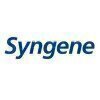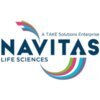Filter interviews by
Qinecsa Solutions Drug Safety Associate Interview Questions and Answers
Qinecsa Solutions Drug Safety Associate Interview Experiences
11 interviews found
(2 Questions)
- Q1. Difference between AE and ADR
- Q2. Hematovigilance
(1 Question)
- Q1. Back ground verification

(2 Questions)
- Q1. MedDRA code, Case processing
- Q2. Narrative writing
Interview Preparation Tips

(2 Questions)
- Q1. Difference between Adverse event and adverse effect.
- Q2. Explain labelling
Skills evaluated in this interview
I applied via Referral and was interviewed before Aug 2022. There were 3 interview rounds.

(2 Questions)
- Q1. About education
- Q2. About package and norms
(1 Question)
- Q1. About Pharmacovigliance clinical research program
Interview Preparation Tips

(1 Question)
- Q1. Pharmacovigilance questions and experience related questions.
Interview Preparation Tips
I applied via Company Website and was interviewed in Feb 2021. There were 3 interview rounds.
Interview Questionnaire
5 Questions
- Q1. What is the difference between product abuse and misuse
- Q2. What are the types of clinical trials
- Q3. What is pharmacovigilance
- Q4. What are the basic requirements in a case
- Ans.
The basic requirements in a case are essential elements or conditions that must be met for the case to proceed.
Clear and concise facts
Relevant evidence
Applicable laws and regulations
Proper documentation
Objective analysis
Logical reasoning
Effective communication
Timely resolution
- Q5. What is the difference between adverse event and reaction?
Interview Preparation Tips
Skills evaluated in this interview
I applied via Referral and was interviewed in May 2021. There were 3 interview rounds.
Interview Questionnaire
1 Question
- Q1. Adverse drug reactions, thalidomide history. PV basic.
Interview Preparation Tips
I applied via Referral and was interviewed before Sep 2021. There were 2 interview rounds.
There was some basic question related to Pharmacovigilance .
(2 Questions)
- Q1. What is Pharmacovigilance. What is MeDraw. Explain anything about Argus.
- Q2. What is the difference between clinical research and pharmacovigilance.
Interview Preparation Tips
- Pharmacovigilance
- Drug classification
- Argus database
- Medraw
Interview Questionnaire
1 Question
- Q1. Related to Pharmacovigilance terms
Top trending discussions






Qinecsa Solutions Interview FAQs
Some of the top questions asked at the Qinecsa Solutions Drug Safety Associate interview -
Tell us how to improve this page.
Qinecsa Solutions Interviews By Designations
- Qinecsa Solutions Drug Safety Associate Interview Questions
- Qinecsa Solutions Senior Drug Safety Associate Interview Questions
- Qinecsa Solutions Drug Safety Associate 2 Interview Questions
- Qinecsa Solutions Junior Drug Safety Associate Interview Questions
- Qinecsa Solutions Drug Safety Associate 1 Interview Questions
- Qinecsa Solutions Senior Drug Safety Pharmacovigilance Associate Interview Questions
- Qinecsa Solutions Senior Drug Safety Physician Interview Questions
- Qinecsa Solutions Drug Safety Physician Interview Questions
- Show more
Interview Questions for Popular Designations
- Assistant Manager Interview Questions
- Analyst Interview Questions
- Data Analyst Interview Questions
- Senior Associate Interview Questions
- Research Associate Interview Questions
- Junior Data Analyst Interview Questions
- Senior Process Associate Interview Questions
- Senior Research Associate Interview Questions
- Show more
Overall Interview Experience Rating
based on 5 interview experiences
Difficulty level
Duration
Drug Safety Associate Interview Questions from Similar Companies
Qinecsa Solutions Drug Safety Associate Reviews and Ratings
based on 149 reviews
Rating in categories
|
Senior Drug Safety Associate
475
salaries
| ₹4.2 L/yr - ₹9.5 L/yr |
|
Drug Safety Associate
412
salaries
| ₹2.5 L/yr - ₹7 L/yr |
|
Drug Safety Associate 2
334
salaries
| ₹3.6 L/yr - ₹8 L/yr |
|
Junior Drug Safety Associate
303
salaries
| ₹2.2 L/yr - ₹3.5 L/yr |
|
Drug Safety Associate 1
214
salaries
| ₹3 L/yr - ₹6.5 L/yr |

IQVIA

Syngene International

SGS

Aragen Life Sciences
- Home >
- Interviews >
- Qinecsa Solutions Interview Questions












